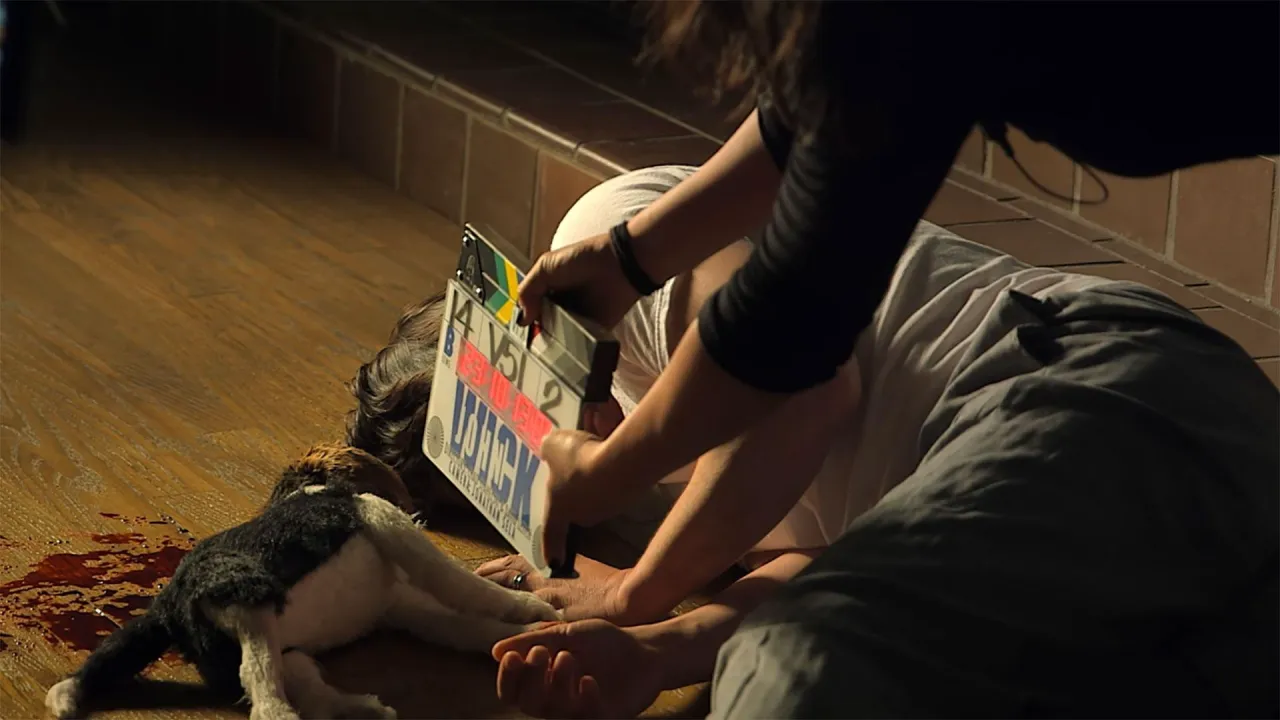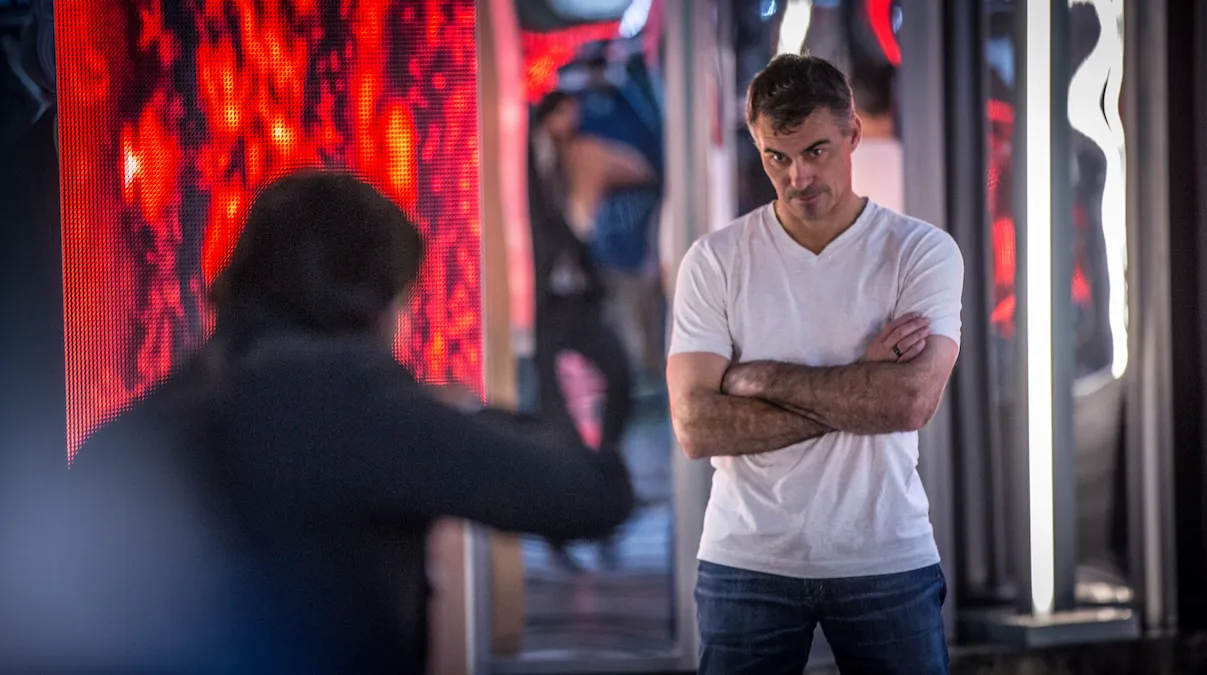In 2014, Chad Stahelski and David Leitch, veteran stuntmen and part-time directors, could hardly have imagined what “John Wick” would become. Today, it’s no longer just a film, but a massive and sprawling franchise. Now, action movies are measured against “Wick,” it has become the flagship of the genre in an era of total crisis. Keanu Reeves was also given a special dividend – after a series of unsuccessful attempts to return to action with films like “47 Ronin” and “Man of Tai Chi,” he finally found his hero and stopped making mistakes. But even here, there were bruises and abrasions – throughout all the “Wick” films, Reeves willingly broke himself, masochistically testing his body’s strength and performing most of the stunts himself. It’s no wonder that Stahelski, looking at his limping colleague, would say: “‘Wick’ is pain.” It seems that this will become the philosophy of the franchise, because it was filmed not without creaking knees and nervous exhaustion.

Still from the documentary “Wick –– is Pain”
Stahelski and Reeves are natural-born action fanatics, with enthusiasm stretching from Hong Kong action films to anime. They merged into a single whole on “The Matrix,” literally becoming one body. Chad performed complex stunts for Keanu and subsequently built a successful stunt career – kickboxing in Hollywood came in handy. “Here you broke your knee, and here you’re on crutches,” colleagues admiringly recall the fight scenes, now watching the limping Reeves. In the first minutes of the documentary, the actor admits that he always envied Scorsese and De Niro. They had something like a union, with the irreplaceable chemistry of a director and actor duo. “But now I have my own director,” the actor who plays Wick solemnly concludes.
Wick is Pain: A Love Letter to Stunts
“Wick is Pain” by Jeffrey Do is not like a dry documentary with talking heads, but rather a recorded ode to the stunt profession. It brings together all the people who can judge the craft as an art. The Academy has also come to its senses, firmly deciding to award Oscars for the best stunts soon. After all, “John Wick” began as a crazy project by stunt masters: Stahelski dreamed of his own film, David Leitch – another action film director like “Atomic Blonde” and “Bullet Train” – also joined the action about an angry killer as a co-director. The first started as Brandon Lee’s double on the infamous “The Crow,” the second responsibly performed stunts for Van Damme in the late 90s. Stahelski and Leitch would later form a team and create 87Eleven – a company that would make action movies even more exciting to watch, and brawls would turn into skillful choreography.

Still from the documentary “Wick –– is Pain”
Overcoming Obstacles
Having the right people in the right place is not always a guarantee that things will go smoothly. The authors tell how “John Wick” faced big problems from the very beginning. Sponsors did not provide the necessary funds, and the film stalled five days before shooting – Stahelski, not out of sheer drama, believed that the film would have to be closed. Producer Basil Ivanik repeatedly covered expenses out of his own pocket, as did Keanu Reeves. The film was saved by actress Eva Longoria, who invested money literally 24 hours before the project was shut down. Funny truth: “John Wick” came about due to the noble intervention of the star of “Desperate Housewives.”
There were also difficulties of a substantive nature. How could stuntmen and stunt coordinators stage ordinary scenes where there is no fighting and shooting? Everything was new to them – even scenes with a sad Wick walking around the house. Or the trigger of the plot, the killing of the dog, which screenwriter Derek Kolstad came up with, bypassing the golden rule of Hollywood: never kill pets. This instantly cut off part of the audience at test screenings, while others, on the contrary, willingly accepted Wick’s vengeful mission, who had his main reminder of his deceased wife taken away. Not to mention the efforts of marketers to sell an action movie with Keanu Reeves – at first glance, another cheap B-category project.

Still from the documentary “Wick –– is Pain”
The Pain Behind the Action
Listening to stories from Reeves, Leitch, and Stahelski, it’s easy to assume why “Wick” is really pain, calluses, and continuous injuries. The film was not built immediately – it was necessary to re-edit hours of footage and give it a polish, and also solve personal problems – Stahelski divorced his wife, which could not but affect the emotional state of the director. But the authors were not going to stall and, having made a film bomb, began to expand the franchise – they wanted this, and Lionsgate also pushed for increased capacity. Leitch went solo, and recently he himself sang the subtleties of the extreme profession in “The Fall Guy,” the stunts in “Wick” became more and more complex, the timing – longer, the locations stretched from the Old World to Japan, and the restraining factors disappeared by themselves – fantasy allowed Stahelski and Reeves to do literally anything they wanted. They intertwined martial arts: kung fu, judo, and jiu-jitsu – with the aesthetics of anime, comics, and game shooters. Reeves is a shooter and fighter no worse than a real special forces soldier, he willingly exposed his body, delegating only the wildest stunts to a double.
“Wick is Pain” is not only a story about the difficulties during production, but also an objective way of measuring: broken heads, shot walls, and mastered locations. This is a film of extreme extensiveness, which many action films could only dream of. Stahelski and Reeves once met on the set, but there they found their home and family – “Wick” became a lifelong endeavor and a project of complete dedication. How long will John Wick live on the screen? Obviously, as long as the body is able to move, and the soul is burning with childish enthusiasm. In this sense, Jeffrey Do’s documentary can be considered an aperitif to the upcoming release of “Ballerina.”